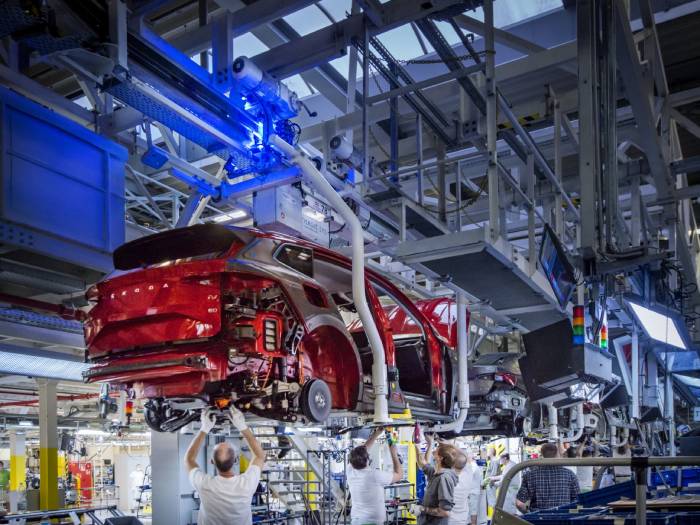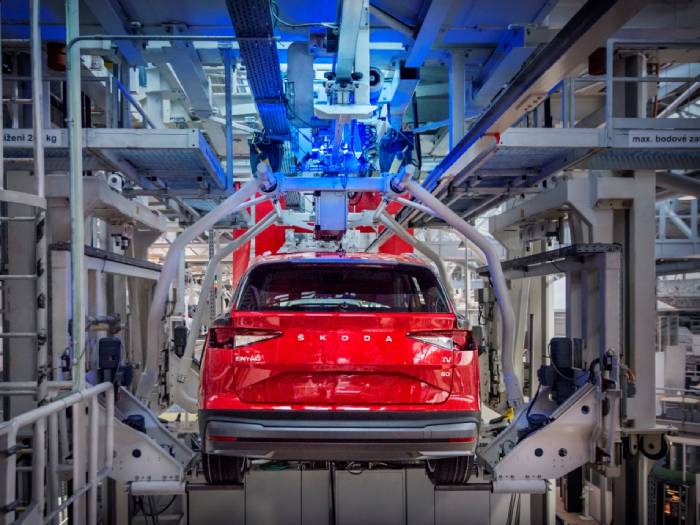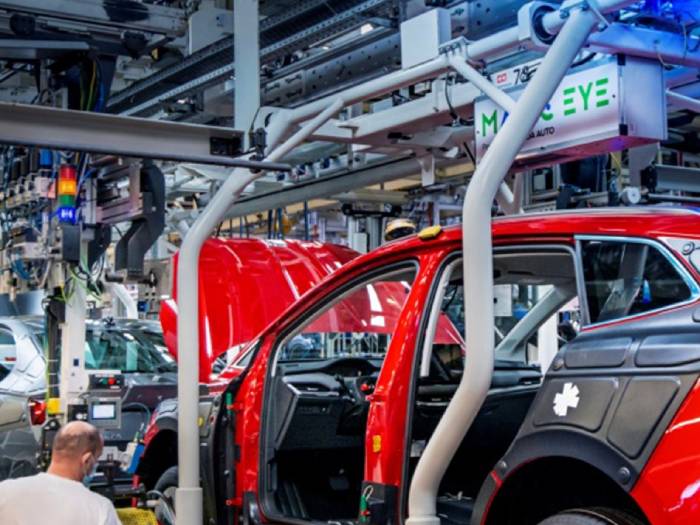AI and predictive maintenance: no stops for more efficient production
The MAGIC EYE system uses seven cameras and artificial intelligence neural networks to predict and avoid stops on the ŠKODA production line, reducing costs and increasing efficiency.
Hall M13 in the Mladá Boleslav plant in the Czech Republic is one of ŠKODA's most important assembly lines. It is here that the best-selling Octavia and the 100% electric Enyaq iV SUV are produced, and every minute of downtime has a significant impact on production.
That's why, while keeping quality paramount, using assets efficiently is crucial. Striving for maximum efficiency means minimising downtime, which in turn means minimising the defects that cause them.
Reducing defects with predictive maintenance
Defects can be prevented by employing expensive preventive measures, or by more intensive maintenance that requires more staff and higher qualifications. “Thanks to digitisation and data collection, we can estimate when a given piece of equipment is on verge of breaking down and repair it before it does. This is the best form of maintenance” explains Marek Jancák, Head of Production at ŠKODA.
This approach is called predictive maintenance and is one of the pillars of ŠKODA's strategy until 2025. One of the first projects was implemented in Hall M13, with a system called MAGIC EYE.
MAGIC EYE: hardware and software

MAGIC EYE monitors the condition of the mobile girders that suspend the cars as they proceed along the line and detects any faults; the same action is carried out on the so-called shins, which are the interface with which the production line equipment receives power and data.
The system consists of hardware that is installed directly on one of the frames that travel along the line with the car bodies and some advanced software that integrates artificial intelligence. Six cameras are mounted on each frame to monitor the condition of the different elements, while a seventh camera reads the QR codes that determine the position of the scanning device. All the cameras are connected to a computer that supports ten artificial neural networks that perform parallel analyses of the collected photos.
Artificial neural networks
Artificial neural networks are one of the fundamental elements of artificial intelligence. It is a computational model that simulates the behaviour of neurons, i.e. biological networks. Artificial neurons transmit signals to each other within the network and process them using transfer functions.
Currently, neural networks are used, for example, in image or sound recognition, to predict how time series will develop, but there are many other applications of artificial intelligence.
Artificial intelligence and learning

To make the MAGIC EYE system work, the digital neural networks had to learn how to recognise defects: the process took three months and required thousands of different photos. “We used photos taken during the tests, but also an advanced mathematical modelling method to model some of the defects in a virtual environment”, says Libor Šída, who devised the cutting-edge project in Hall M13.
The digital modelling was necessary because some possible faults are very rare to encounter in reality and are so serious that learning about them in the real life would mean compromising production. “A cracked beam, for example, is a failure that basically cannot occur”, Šída adds.
Recognising defects of all kinds
The MAGIC EYE system can recognise 14 types of defect: “We can detect several classes for each defect, for example the difference between a bolt that is not tightened properly and one that is completely sheared off. In total, the system can detect a hundred of these different conditions”, resumes Šída, who then talks about the benefit of an artificial neural network known as an auto-encoder.
“It is a useful solution for simulating defects that have never been encountered and therefore never simulated, such as the presence of a foreign object, for example metal shavings on the track”, Šída concludes. For each car that travels along the production line, the cameras collect around 450,000 photos, which are immediately analysed and sent to the cloud.
The evolution of real time maintenance

If the system detects an irregularity, it immediately alerts the maintenance operator, who checks in the dedicated app whether it is an emerging defect or a false alarm, after which he can decide whether to take immediate corrective action or, if the problem is not serious, to schedule a repair during a scheduled downtime period. “Every detected defect helps us to improve the system” says Filip Koliáš, Head of the Central Technical Service, who goes on to explain how these innovations are changing the perception of the maintenance profession itself.
Maintenance specialists are no longer just skilled technicians and mechanics, but also digital experts. MAGIC EYE will also be deployed in other plants, not just those dedicated to production. The Volkswagen Group is also interested in this technology, for which a patent application is pending.
Source: ŠKODA
VGI | Responsible OU: VP | Creation date: article date | Class 9.1
